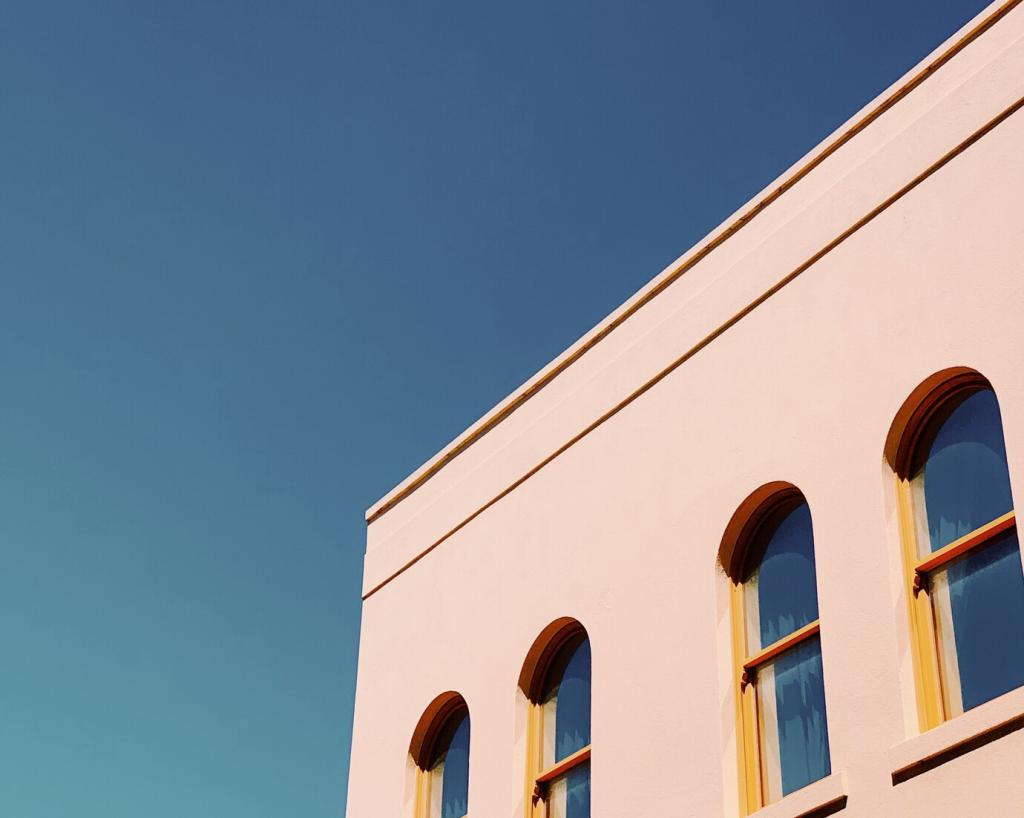Innovative Materials in Modern Exterior Design
The landscape of exterior design is rapidly evolving, thanks to a new generation of innovative materials that prioritize both aesthetics and performance. These advanced materials are redefining the way architects, designers, and homeowners approach the creation of modern exteriors. With improved durability, sustainability, and versatility, today’s options offer endless possibilities for facades, cladding, and outdoor spaces. This page explores the most cutting-edge solutions currently influencing the world of modern exterior design, examining how they contribute to both function and visual appeal.
Sustainable Composite Materials
Fiber Cement Panels
Fiber cement panels offer a harmonious blend of strength, versatility, and visual appeal. Composed primarily of cement, sand, and cellulose fibers, these panels are resistant to rot, fire, and pests, making them ideal for long-term use in exterior applications. Their ability to replicate the appearance of wood, stone, or smooth modern surfaces allows designers to experiment with various aesthetics while maintaining durability. Beyond their functional benefits, fiber cement panels contribute to sustainable building practices, often incorporating recycled content and providing impressive longevity, which reduces maintenance and replacement needs over time.
Wood-Plastic Composites
Wood-plastic composites are engineered from a mix of wood fibers and thermoplastics, resulting in a product that embodies the natural warmth of wood with the resilience of plastic. Designed for decks, fences, and exterior cladding, these materials boast outstanding resistance to moisture, fading, and insects. Unlike traditional timber, wood-plastic composites require minimal upkeep and retain their appearance for years without the need for staining or sealing. Their formulation often utilizes recycled plastics and wood byproducts, making them an environmentally friendly alternative to hardwoods. As a result, they provide designers and property owners with a sustainable, low-maintenance solution with the appealing aesthetics of authentic wood.
Recycled Metal Panels
Recycled metal panels are gaining traction as a sustainable and robust option for contemporary exteriors. Made from post-consumer or post-industrial metals such as aluminum or steel, these panels offer excellent weather resistance and structural integrity. Their sleek, modern look can be customized through finishes, coatings, and colors to create bold visual statements or subtle accents. Utilizing recycled metal not only conserves resources but also reduces energy consumption compared to producing new materials. These panels often feature in green-certified buildings, reflecting a commitment to both cutting-edge design and environmental responsibility while ensuring outstanding longevity.
Insulated Metal Panels
Insulated metal panels combine a structural metal face with a high-performance insulating core, resulting in superior thermal regulation for building exteriors. These panels not only contribute to energy savings by reducing heat transfer but also provide a modern, seamless appearance. Their design versatility allows for rapid installation, which can reduce overall construction time. Often used in commercial and high-performance residential projects, insulated metal panels support stricter building codes and sustainability goals by helping maintain interior comfort with minimal energy use. Their robust construction also ensures long-term resistance to weather, fire, and mechanical damage.
Photovoltaic Facades
Photovoltaic facades integrate solar technology into building exteriors, transforming walls and cladding elements into active energy-harvesting surfaces. These facades are pivotal in creating net-zero-energy buildings, as they generate electricity while serving as protective and decorative layers. Modern photovoltaic solutions can be adapted to different architectural forms, offering both transparency and solid finishes to match design intentions. As solar cell efficiency continues to improve, these facades represent an innovative fusion of sustainability and aesthetics, allowing buildings to offset their energy consumption and contribute positively to the environment without sacrificing visual impact.
Self-Cleaning Surfaces
Self-cleaning surface technology is an exciting development in cladding materials, offering automated maintenance and enhanced durability. Utilizing special hydrophobic or photocatalytic coatings, these surfaces repel water, dirt, and pollutants, maintaining a pristine appearance with minimal human intervention. This innovative feature reduces cleaning costs and preserves the aesthetic quality of exteriors over time. Self-cleaning materials are especially valuable in urban environments with high pollution or in hard-to-reach building elevations. In addition to practical benefits, they often contribute to healthier, more sustainable buildings by minimizing the need for harsh chemical cleansers and resource-intensive maintenance processes.
Previous slide
Next slide

Low-E Glass
Low-emissivity (Low-E) glass is revolutionizing exterior design by effectively managing solar heat gain while allowing abundant natural light to penetrate interiors. This special coating reflects infrared energy, keeping interiors cooler in summer and warmer in winter, which significantly improves energy efficiency. Low-E glass reduces reliance on artificial heating and cooling, helping buildings meet stringent environmental standards. Despite its technical performance, it retains a clear, crisp appearance, making it a top choice for contemporary facades and expansive window systems that demand both beauty and function.
Laminated Safety Glass
Laminated safety glass is increasingly used in modern exteriors for its exceptional strength and protective qualities. Constructed by fusing layers of glass with a durable interlayer, it remains intact even when fractured, enhancing building security and reducing the risk of injury from broken shards. Beyond safety, it can be engineered to block ultraviolet rays and reduce external noise, making it a multi-functional solution for bustling urban environments or hurricane-prone areas. Designers appreciate its flexibility for balconies, railings, and curtain walls where exposure to impact or weather extremes is a concern.
Dynamic Glass
Dynamic glass, also known as smart glass, adapts its tint in response to sunlight or user controls, offering unparalleled control over interior brightness and heat gain. This technology allows windows and facades to adjust automatically throughout the day, optimizing comfort and energy usage without obscuring views. Dynamic glass can be integrated into building automation systems, providing a high-tech solution that enhances both occupant wellbeing and architectural drama. Its application ranges from residential windows to large-scale commercial facades, where changing exterior conditions demand flexible and intelligent building skins.
